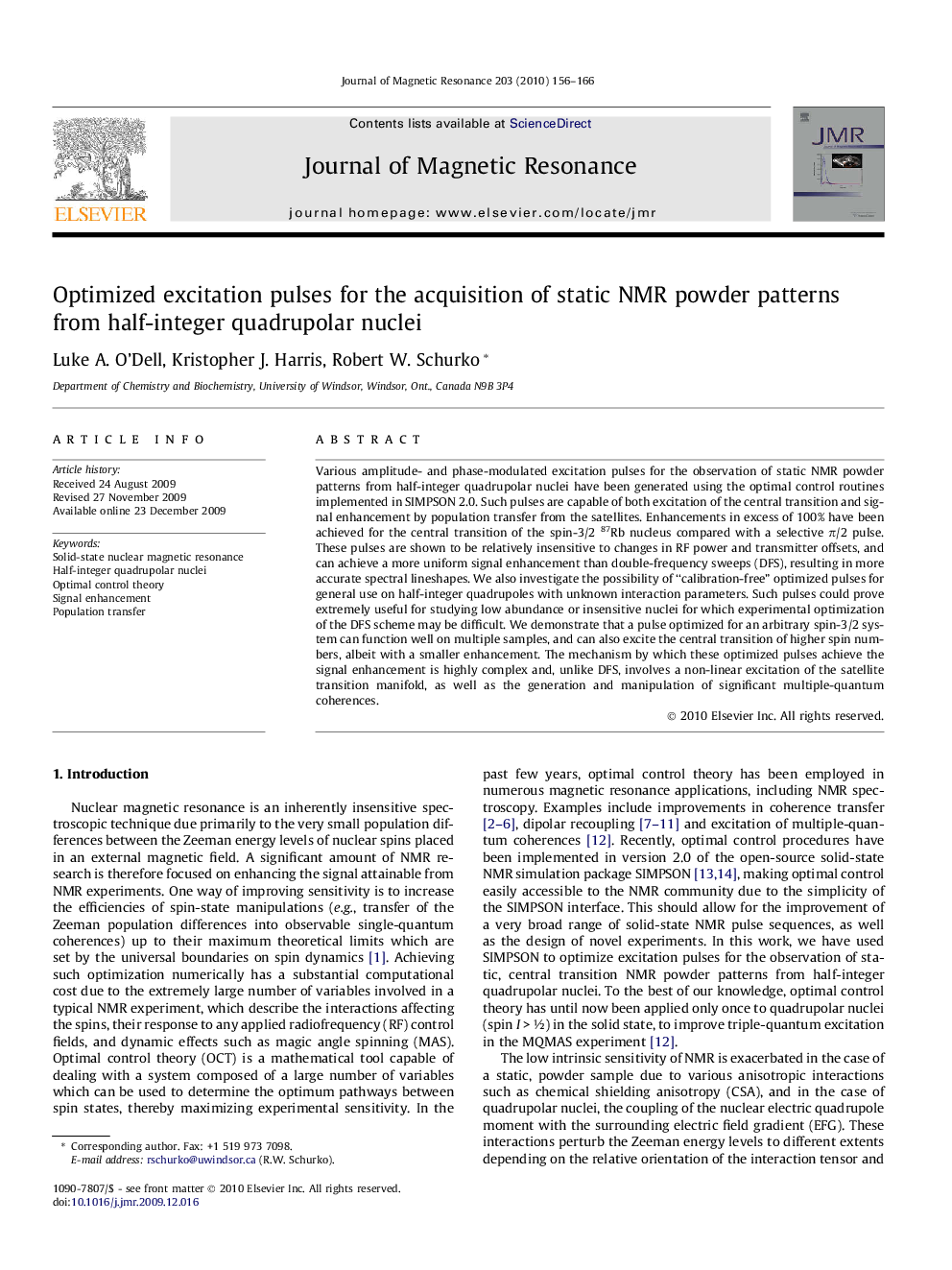| Article ID | Journal | Published Year | Pages | File Type |
|---|---|---|---|---|
| 5406739 | Journal of Magnetic Resonance | 2010 | 11 Pages |
Abstract
Various amplitude- and phase-modulated excitation pulses for the observation of static NMR powder patterns from half-integer quadrupolar nuclei have been generated using the optimal control routines implemented in SIMPSON 2.0. Such pulses are capable of both excitation of the central transition and signal enhancement by population transfer from the satellites. Enhancements in excess of 100% have been achieved for the central transition of the spin-3/2 87Rb nucleus compared with a selective Ï/2 pulse. These pulses are shown to be relatively insensitive to changes in RF power and transmitter offsets, and can achieve a more uniform signal enhancement than double-frequency sweeps (DFS), resulting in more accurate spectral lineshapes. We also investigate the possibility of “calibration-free” optimized pulses for general use on half-integer quadrupoles with unknown interaction parameters. Such pulses could prove extremely useful for studying low abundance or insensitive nuclei for which experimental optimization of the DFS scheme may be difficult. We demonstrate that a pulse optimized for an arbitrary spin-3/2 system can function well on multiple samples, and can also excite the central transition of higher spin numbers, albeit with a smaller enhancement. The mechanism by which these optimized pulses achieve the signal enhancement is highly complex and, unlike DFS, involves a non-linear excitation of the satellite transition manifold, as well as the generation and manipulation of significant multiple-quantum coherences.
Keywords
Related Topics
Physical Sciences and Engineering
Chemistry
Physical and Theoretical Chemistry
Authors
Luke A. O'Dell, Kristopher J. Harris, Robert W. Schurko,
